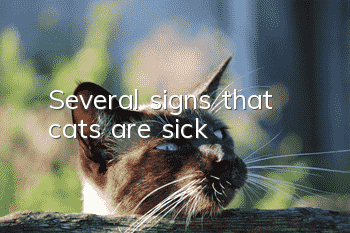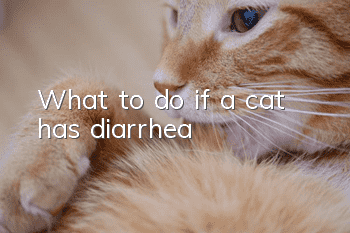Several signs that cats are sick

Cats do not move as much as dogs. It is often necessary to understand the health status of cats from the small details in daily life. In any case, it is necessary to develop the habit of "observation" and "recording" in order to Keep track of your cat’s physical health!
1. Lack of energy
A cat’s lack of energy is a precursor to many diseases. When a cat is slow in movement, introverted, and unresponsive, you must pay attention to observe its other reactions to judge its condition.
2. Loss of appetite
When a cat suddenly has a loss of appetite or a sudden increase in food intake, it indicates that there is something abnormal in the cat's body. The milder disease is hair ball disease, and the more serious disease is diabetes.
3. Abnormal respiratory tract
If a cat has respiratory symptoms, such as sneezing, coughing, difficulty breathing, etc., it may be a problem with the cat’s nasal bronchus or a cold.
4. Vomiting
Vomiting is also one of the important manifestations of cat illness. Owners should pay attention to observation. If the cat’s spirit and appetite are normal after vomiting, it is usually just vomiting hair balls, so don’t worry about it; if vomiting continues, it should be fasted and water-free for 24 hours. Feed lactase raw.
5. Dry and hot nose
A healthy cat’s nose is moist and cold. Except when the cat is sleeping and just waking up, if the cat’s nose is dry, it means the cat is not very comfortable. If the cat's nose is dry and hot, you should measure the cat's temperature immediately. The cat is likely to have a fever.
6. Bad breath
Research shows that 70% of cats may have gum problems by the time they are 3 years old. You must have your cat’s mouth checked by a doctor every six months to prevent problems or treat them early. Bad breath can also be a symptom of problems outside the mouth, such as kidney failure.
7. Drooling
When a cat has symptoms of drooling, pay attention to the cat’s mouth. The causes of drooling include ingestion of foreign objects, oral ulcers, etc. In severe cases, it may be feline leukemia.
8. Urination, frequent urination, and urinary incontinence
Once a cat, especially a male cat, has a problem with its urinary system, parents must pay attention immediately, because once a cat holds urine for more than 24 hours, it will cause azotemia, even renal failure and uremia, and the consequences will be very serious.
9. Exposed third eyelid
When a cat is sleeping, if you open its eyelids, you can see a white film attached to the eyeball. This film is called the third eyelid. When a cat has a fever or is severely weakened, the third eyelid will be exposed.
10. Limp
When a cat is afraid to touch the ground with its limbs or is limping, it may be a puncture on its foot in a mild case, or a fracture in a serious case.
11. Changes in activity
Remember, cats don’t move slowly just because they “get older”. “Getting older” is not a disease! In fact, some problems will cause an increase in activity in older cats. Slow movement is sometimes a symptom of bone and joint problems or systemic disease.
12. Change of voice
Changes in meowing, especially in older cats, may be a sign of pain, anxiety, or illness.
- What to do if the kitten’s body temperature is low
- Why does cat urine smell like body odor?
- How to bathe a cat who is afraid of water
- Shit shovel officer, have you masturbated today?
- The cat’s belly keeps twitching
- Will kittens recognize their owners?
- Can kittens eat white fungus porridge?
- American curly cat personality traits
- Can cat plague be transmitted to humans? How to prevent cat plague
- What are the effects of cryptorchidism in cats?



